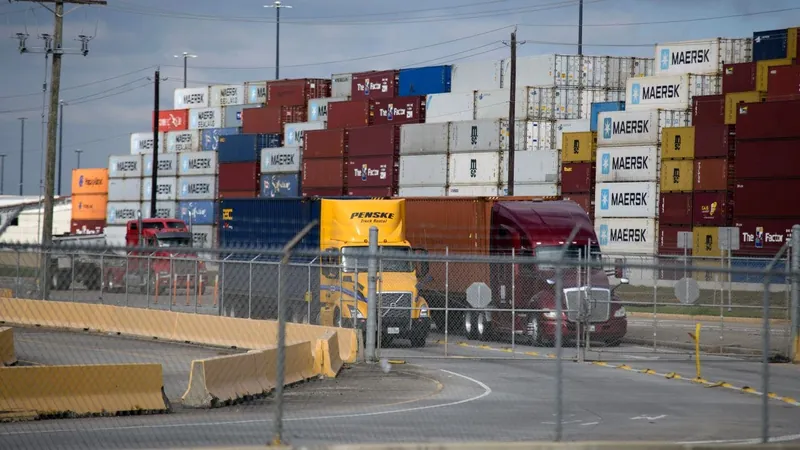
Dockworkers Strike Ends: What’s Next for the Supply Chain? Recovery Timeline Revealed!
2024-10-05
Overview of the Dockworkers' Strike
Unionized dockworkers have temporarily halted their strike at East and Gulf Coast ports, but the repercussions of their actions will be felt for weeks to come.
While the International Longshoremen's Association (ILA) reached a tentative agreement with the U.S. Maritime Alliance (USMX) after three days of striking, the backlog of cargo created during this period poses a significant challenge for port operations and the broader supply chain.
Details of the Tentative Agreement
The deal, which must be ratified by both parties by mid-January, promises a staggering 62% pay increase for dockworkers over the new contract term.
However, ongoing discussions are necessary to address contentious issues surrounding automation, which have been a sticking point in negotiations.
Predicted Impact on Supply Chain Recovery
Experts predict a lengthy recovery for port operations.
Douglas Kent, Executive Vice President at the Association for Supply Chain Management (ASCM), highlighted the intricate connections within the supply chain, stating, 'For every one day of shutdown, it takes about five days to recover.' This means that the disruption could stretch for several weeks as ports grapple with offloaded cargo and its ripple effects on downstream industries.
Broader Implications of Cargo Delays
The ramifications of cargo delays extend beyond just port operations and affect the entire logistics ecosystem.
Kent noted that the delays impact various stakeholders, from manufacturers to warehouse operators, creating a scenario where goods are often not in the right place at the right time.
'When vessels arrive at the port but face delays in clearing due to workforce issues, our trucking capacities and rail systems also get backed up,' he explained.
Analysis from Everstream Analytics
According to Everstream Analytics, a leading supply chain consultancy, the impact of the three-day strike could mean a minimum of three weeks to return to normal operations at U.S. ports.
They also observed that the number of container ships waiting outside the ports dropped overnight, indicating a gradual movement back to normalcy as container terminals prepare to reopen.
Challenges for Shippers and Logistics
However, it's not just the waiting ships that pose challenges.
Shippers who had diverted to alternative ports, such as those in the Bahamas, will need to manage the logistics of retrieving those containers.
This creates another layer of complexity in the recovery process for companies already strained by previous disruptions.
Looking Ahead: Future Negotiations and Implications
As industry stakeholders brace for prolonged recovery efforts, the question remains: How will this strike and its aftermath impact future negotiations regarding labor and automation in the ports?
With ongoing discussions and a crucial deadline looming in January, the coming weeks will be critical in shaping the future of port operations and the U.S. supply chain as a whole.
Conclusion
Stay tuned as we continue to report on this developing story and examine its far-reaching implications for the economy!





 Brasil (PT)
Brasil (PT)
 Canada (EN)
Canada (EN)
 Chile (ES)
Chile (ES)
 España (ES)
España (ES)
 France (FR)
France (FR)
 Hong Kong (EN)
Hong Kong (EN)
 Italia (IT)
Italia (IT)
 日本 (JA)
日本 (JA)
 Magyarország (HU)
Magyarország (HU)
 Norge (NO)
Norge (NO)
 Polska (PL)
Polska (PL)
 Schweiz (DE)
Schweiz (DE)
 Singapore (EN)
Singapore (EN)
 Sverige (SV)
Sverige (SV)
 Suomi (FI)
Suomi (FI)
 Türkiye (TR)
Türkiye (TR)